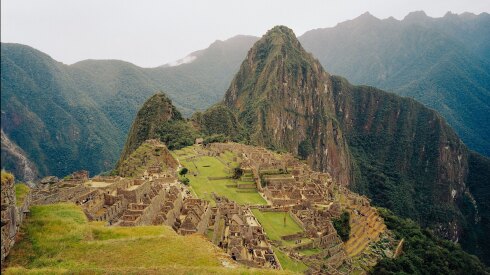The Place Bonaventure is widely recognized as one of the most important buildings constructed in Canada in the 1960s, though that’s not to say it’s universally loved. It’s a regular contender for the title of Montreal’s ugliest building. For the student of architecture, however, whether armchair or otherwise, it’s worth a visit to see an outstanding example of brutalist architecture. Architect Raymond Affleck’s vision was to turn the city inside-out in a building appropriate for its location in a cold climate. The Place Bonaventure was designed to include a conference center, hotel, and several floors of retail space, all along internal streets while the building presents a foreboding exterior of ribbed concrete (echoing the design of the seminal Architecture School at Yale University by Paul Rudolph) to the street. The entire complex included 3.1 million square feet of floor space, making it the largest building in the world when it was completed (in 1967). Much of the retail space was converted to offices in later renovations, though the conference center and the hotel (now the Hôtel Bonaventure Montréal) remain. The photo here was taken inside the hotel—a walk around their common spaces will give you a taste of Affleck’s vision for a new urban architecture.
2600 Pierre-Dupuy Ave
Architect Moshe Safdie’s Habitat 67 apartment complex was built for Expo 67, a key moment in Montreal‘s emergence as one of the world’s cultural capitals. While many buildings from the late 60s haven’t fared well with time, Habitat 67 still achieves Safdie’s goal: demonstrating that contemporary housing projects can be original and appealing works that create a sense of community among their residents. For a public who had come to associate housing projects with off-putting towers set in windswept plazas, Habitat 67 was a revelation with its 354 prefabricated concrete blocks stacked to construct 146 units. Apartments here continue to be coveted and command a premium price. Habitat 67 is a little out of the way from most of the other sites you’ll likely visit, on a peninsula facing Old Montreal. Take a cab to get there and note that the complex is private property—you’ll be turned away by security if you try to enter but you can admire this modernist vision from the street.
175 Rue Sainte-Catherine, Montréal, QC H2X 1Y9, Canada
Place des Arts, the jewel of the Quartier des Spectacles in the center of town, is a cultural complex attached to the Musée d’art contemporain de Montréal that unites five performance spaces, including the Maison Symphonique de Montréal. It has two main performance arts spaces: Théâtre Maisonneuve, a nearly 1,500-seat modern-day rendition of a classical Italian theatre where dance organizations including Grands Ballets Canadiens regularly perform; Salle Wilfrid-Pelletier, which with just under 3,000 seats is better suited for big, boisterous Opéra de Montréal productions; and the smaller, 400-seat Cinquième Salle, home to series of shows by Danse Danse, among others. Photo: Susan Moss












